Japan Photo Set 6 – Himeji Castle
I completed this program in mid-July, so it’d been about 3 months when I made this page. It might be fuzzy on some things.
It’s interesting to note that we found Himeji castle entirely by mistake. Keith, Joe and I decided to wander someplace for the fun of it. Himeji had a really big train station and was the end of a lot of local train lines, so we decided on there. Just outside of the train station, we saw a sign that said “15 minutes to Himeji Castle”. So we found one of the nicest castles in Japan by sheer luck.
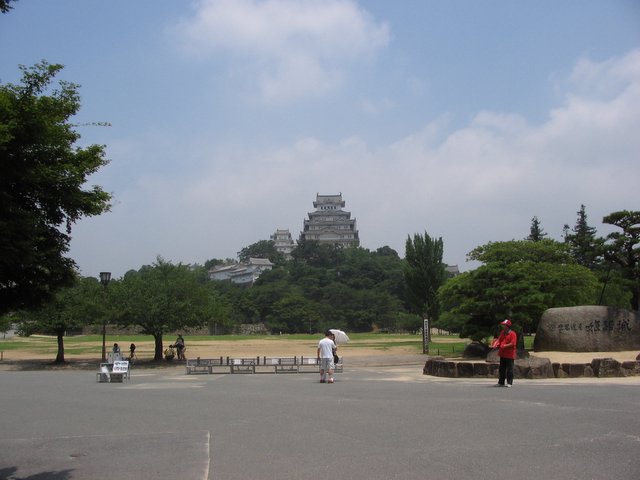
Himeji castle, from far away. On the engraved stone to the right, the larger characters read “Himejijoh”, or “Himeji Castle”. The castle was strategically built on a pretty steep hill.
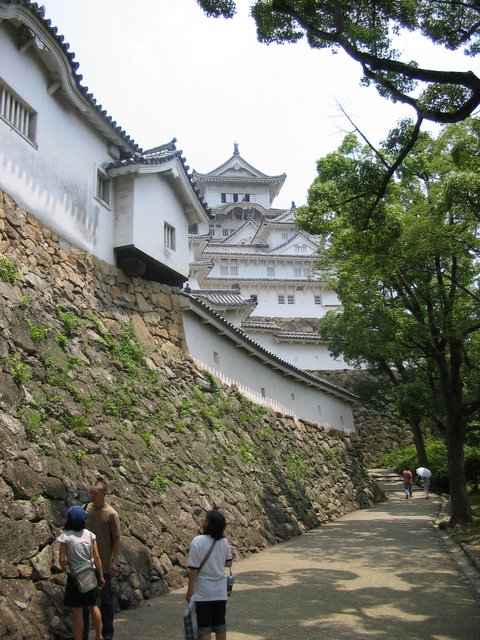
This picture might give a better indication of the sheer size of the castle.
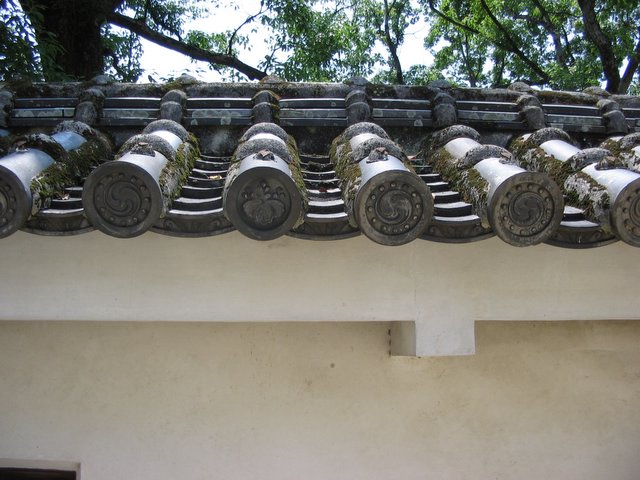
These are the stones used to form the roofing of the castle. The interesting part is that the designs on the stones are the crests/signets of the clan that placed that stone. I’m pretty sure the mid-left crest unlike the others is the Toyotomi family crest (Toyotomi Hideyoshi was the second lord to seize power during the Sengoku era). The other one is the Naomoro family crest.
We learned from our Japanese professor near the end of the school year that every Japanese family has a crest, but it is not often used except for special occasions (weddings, funerals, etc).
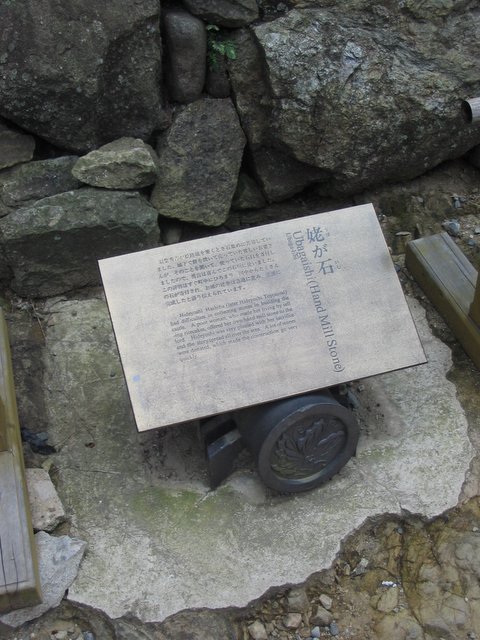
An “Ubagaishi” or hand mill stone. The plaque notes that when Toyotomi Hideyoshi was having problems finding stones to build the castle, a poor woman offered her own hand mill-stone to Hideyoshi. He was extremely pleased and the story spread far and wide.
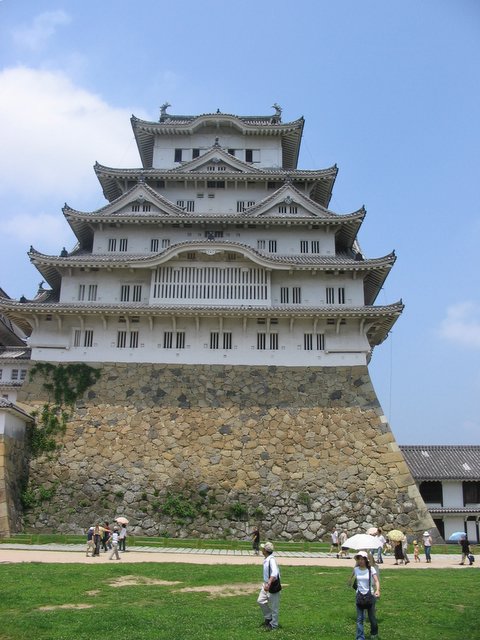
This is the most inside keep area (seen from a courtyard-area in front of it). It took us probably an hour to get here, and we weren’t trying hard. It’s pretty plain that most of this structure is to slow enemy soldiers down to make preparations in the keep or to ensure that the lord of the castle has time to escape.

This sign pretty much says it all. Note that the names are reverse of how they are usually written (i.e. Hideyoshi HASHIBA is Hashiba Hideyoshi). Also, Hashiba H. later changed his surname to Toyotomi.
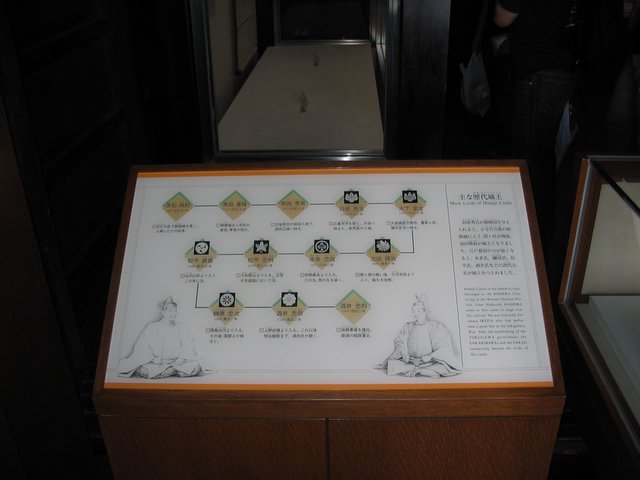
The interior of the keep is essentially a museum dedicated to the history behind the castle. This is a listing of major lord of Himeji castle.
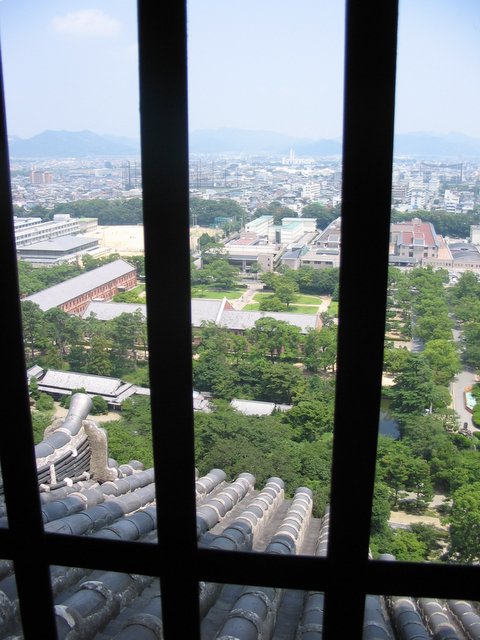
A view of Himeji city from the inside of the keep. The entire city seems to have been built around the castle – it’s sort of odd to see a city built around a still-standing landmark of 400 years ago, but it is really cool.
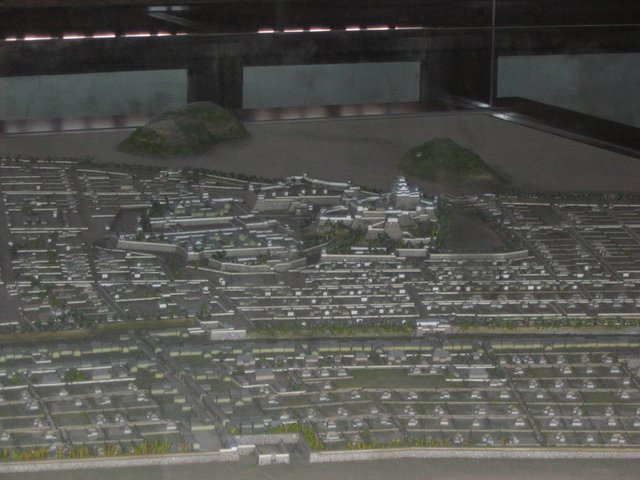
This is a model of the castle that we saw on the way out. At this time, we were around the bottom of the keep (the highest building). This is a model of how the city likely looked 4 centuries ago.
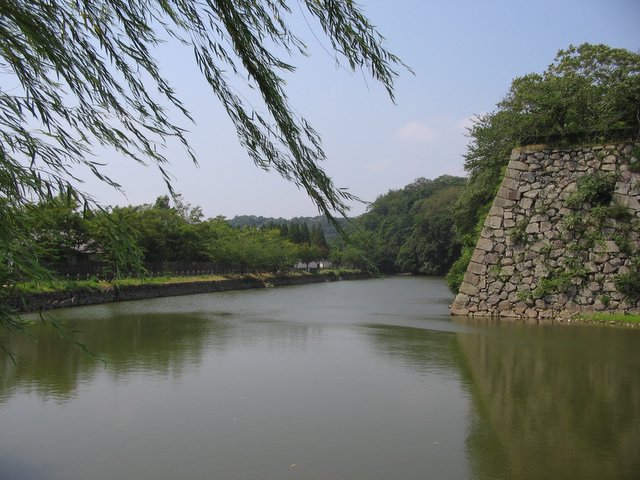
The moat around the castle grounds is still being maintained. It’s remarkably clean, considering it’s on the outskirts of a large city.
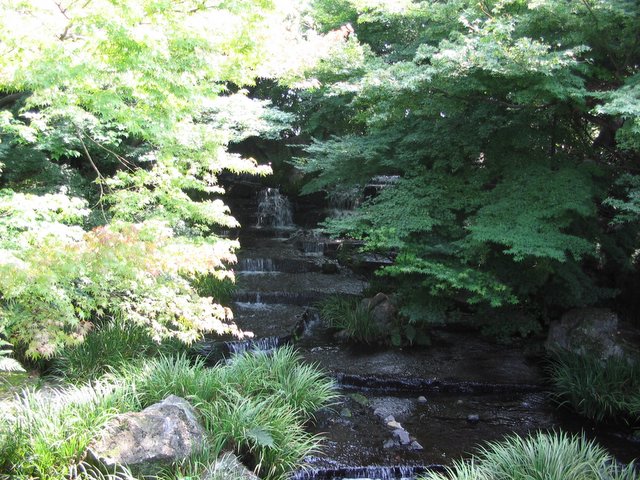
A park was located just around the corner from the family – part of the estate of the families established there. This is one of the nicer waterfalls we saw there.
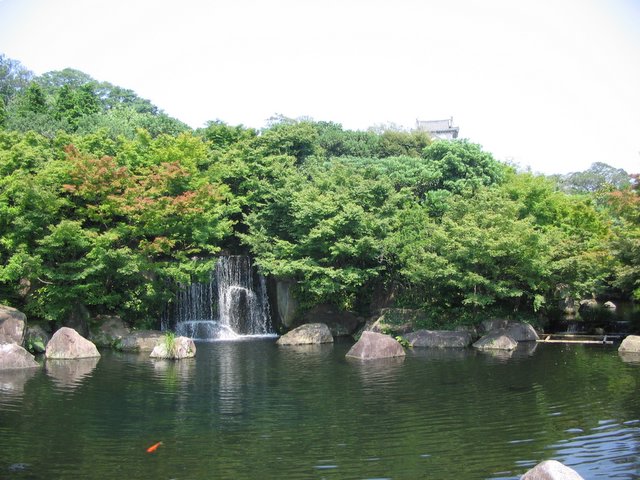
You can see the tip of one of the buildings from the castle proper here.
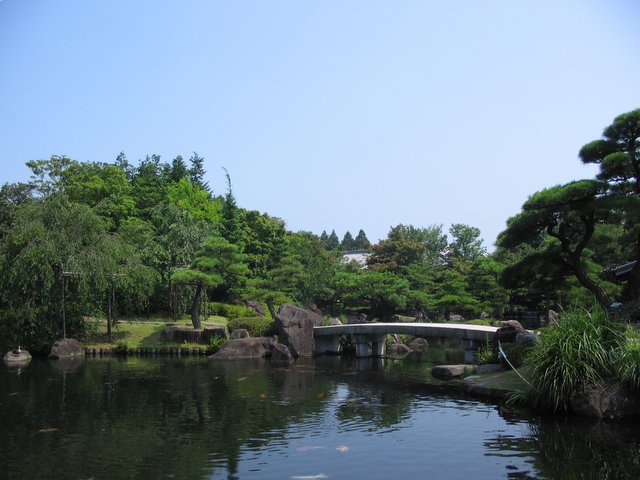
This park was probably created to bring some representation of peace to the family stationed here, in one of the worst times of strife in Japanese history.
Unfortunately, I very much doubt that those without money or power were able to do much to shield themselves from that same chaos.
This is the last picture of Himeji.

This is a Pocky vending machine. Almost everybody I know knows what Pocky is – I’m pretty sure one of those Pretz things was pickle-flavored, and another is tomato-flavored, but I can’t confirm that now.
At Himeji station, we boarded a Shinkansen – One of the fastest bullet-trains, in constant demand for those traveling between major stations.